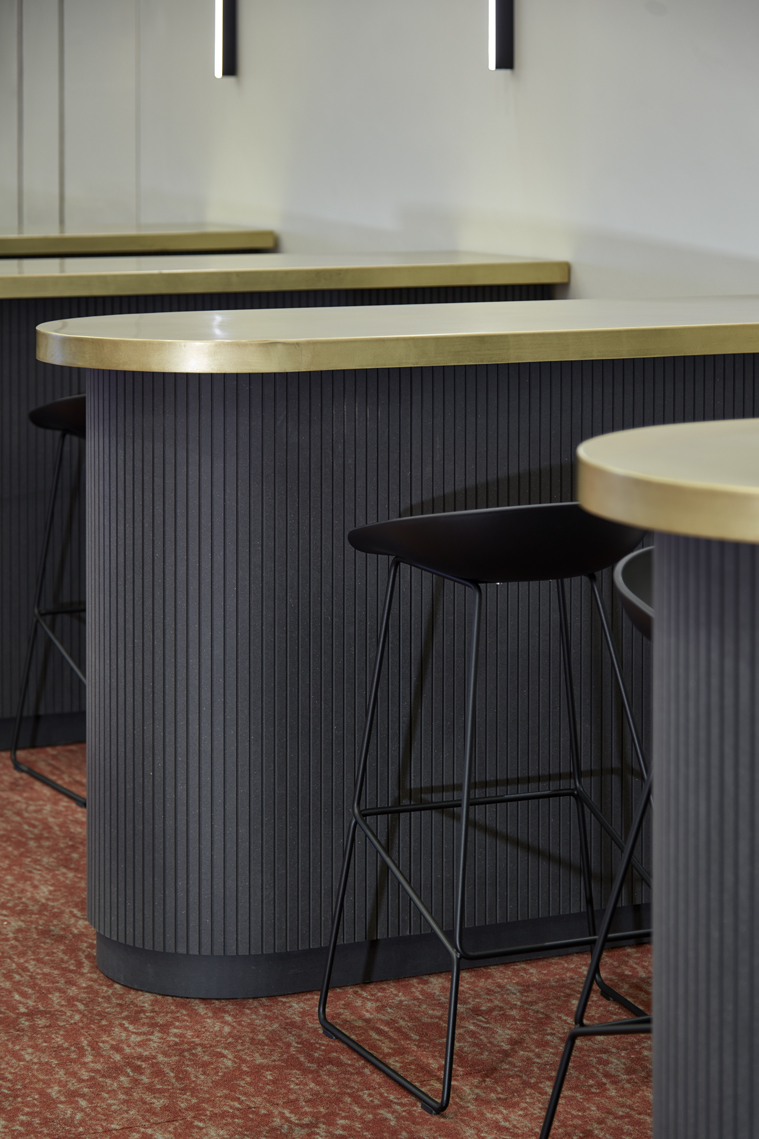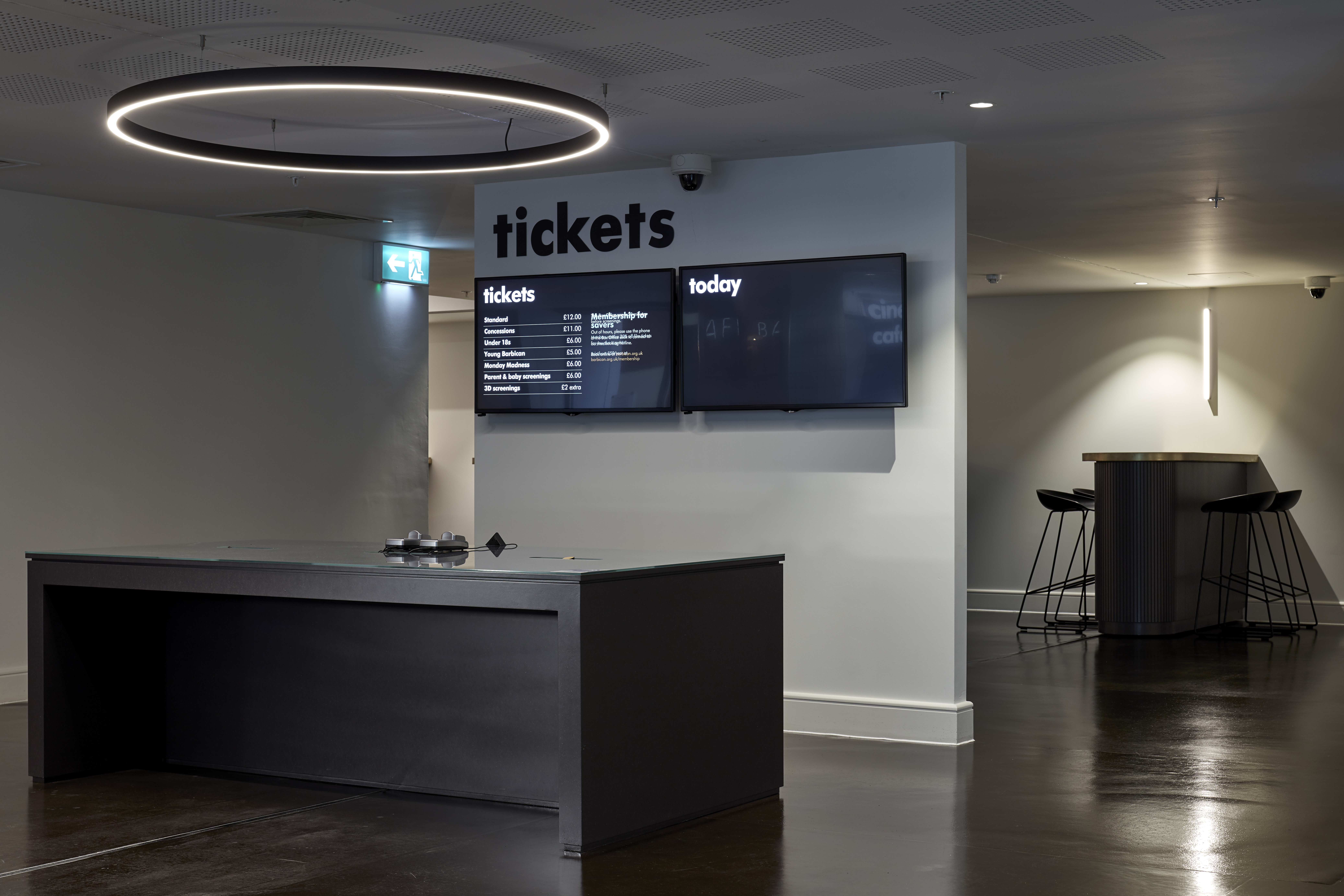| Company Details | |
|---|---|
| Company Name | RUFFARCHITECTS Limited |
| Address | RUFF ARCHITECTS 5th Floor, 205 WARDOUR STREET London United Kingdom Map It |
| Name | Paul Ruff |
| Job Title | Director |
| Email hidden; Javascript is required. | |
| Phone | 02038148992 |
| Role of this organisation in the project being entered | Architect |
| Category |
|
| Name of organisation entering the Awards (if different from above) | RUFFARCHITECTS |
| Role of this organisation in the project being entered (if different from above) | Architect |
| Project Name (written how it should appear) | Barbican Cinemas |
| Project Address | Barbican Centre Silk St, EC2Y 8DS London United Kingdom Map It |
| Client Name | City Of London |
| Designer/Architect Name | RUFFARCHITECTS limited |
| Contractor Name | SEE ADDITIONAL COMMENTS SEE ADDITIONAL COMMENTS |
| Project Description | We are delighted to share with the Surface Design Awards the details of our refurbishment project at the Barbican Cinemas, which forms part of the wider internationally renowned Barbican Centre, putting accessibility, sustainability and transformed visitor experience at the heart of the design. The space comprises of three newly refurbished cinema auditoriums, enlivened foyer and welcome areas as well as reconfigured entrances, all of which supported the reopening of the Barbican Centre and Cinemas which reopened to the public in May 2021, with a cost of £635,000. The Level-2 Foyer, serving Cinema 1 and the Pit Theatre, sits in the main Centre with a 280-seat cinema auditorium and a triple height foyer space. Cinemas 2&3 are located on Beech Street with two 152 seat auditoriums, and a shared foyer and café space. Our brief was to re-enliven and revitalise an iconic and much-loved arts and cultural centre point that stayed true to its authenticity. We looked to the past to plan the future, using original unseen archive models and photos to inform their sensitive and considered refurbishment of the Chamberlin, Powell and Bon designed building. Though a holistic strategy we approached this project from a retrofit stance, which is key to our Studio’s approach, and as such were excited to have a wealth of existing items within the Barbican’s archives that guided our design choices and we have upcycled and reused wherever possible. From an early stage in the project, we identified the changing ways in which visitors were using the venues and what they were expecting from the audience experience. We focused on an authentic, high quality and appropriate refurbishment that also improved the visitor’s journey within these spaces, whilst helping to re-establish the successful original concepts of light, space, perspective, and simplicity in this listed building. Using these key architectural references our aim was to create an improved, welcoming, and intimate series of spaces that reinforces the familiarity, identity, and timelessness of the Centre itself without compromising on warmth and ambience. These references continue through RUFFARCHITECTS’s design of the furniture in the spaces. We were able to take original custom-made chairs and repurpose them by stripping back and re-treating, adding soft seating and applying Camira sustainable fabric. The RUFFARCHITECT’S original high- and low- tables were designed with a reeded Valchormat wrapped base, finished with a custom rounded brass top. These materials were chosen specifically for their flexibility and ability to be applied easily to the design. Using these lines throughout has allowed us to sensitively highlight the Barbican’s identity and support the entire space without dominating. This approach was continued through a repeating light placement, highlighting the reinstatement of scale. The approach of referencing archived photography of the space to guide the designs and direction, as well as a deeper understanding of the Grade II Listed building has created a sensitive and mature refurbishment. Our design has recaptured the original openness by reinstating light, order, rhythm, and perspective, making use of the foyer height and the Centre’s key curved motifs. |
| Materials Used | Marmoleum - CO2 neutral linoleum made from raw materials such as flax seed oil, wood flour and Jute. We used this flooring throughout the ticket desk area and in the auditorium in Cinemas 2&3. We chose this material for its organic properties, as it allowed us the durability and flexibility required for such a high footfall and paying into the circular economy without compensating on quality. Valchromat – Environmentally-friendly, non-toxic MDF was used in the design of our custom-made tables, ticket desk, and auditorium chairs. This material is created from recycled pinewood and mill waste, finished with a friendly and safe wood resin. In using this method of using waste wood helps sustain our forests and minimizes carbon emissions that are given off from the traditional approach of tree felling. Using this material in these items allows us to send a clear message of ours and the Barbicans environmental responsibility. Camira – Rapidly-renewable and compostable fabric, used on our new auditorium chairs. We had shortlisted other materials that were more robust but had a lower sustainability rating, so we opted for this lightweight material to continue the strong focus on friendly material use. Autex – Acoustic panelling applied to the walls of Auditorium 1, sourced for its ability to retrofit into an existing space. Contains a minimum of 60% previously recycled polyester fibre, Off-cuts and manufacturing waste are re-used or recycled wherever possible, 100% polyester fibres and does not contain formaldehyde binders, allowing support for safer indoor air quality preventing potential airborne pollutant. |
| Sustainability | We worked closely with the client at Barbican throughout the project process to ensure that we sourced suitable fabric alternatives, using natural and recycled yarns to ensure hygiene and maintenance standards could be met. We challenged all suppliers and manufacturers we approached to go beyond in their offering and to aid us in meeting sustainable checkpoints, whilst delivering on a beautiful finish. All added materials used were meticulously selected for either their sustainability credentials, as well as their impact on their production and the environment. We did this by ensuring that it was a high scoring point and requesting sustainability measures from tendered suppliers. Where possible we actively selected suppliers and manufacturers that were local or UK based to lower our carbon footprint. The original foyer armchairs were up-cycled and wood treated in a workshop locally to the Barbican in London and the auditorium chairs were created using all UK materials and mechanical components, built in Manchester. Aside from the materials used, we considered changing audiences and accessibility needs - utilising enhanced technology including digital wayfinding, and refinements to paperless ticketing. Our concept creates navigation points through the journey of arrival, meeting, collecting tickets, dining, as well as the screen experience. A significant amount of work at Beech Street was about providing a consistent visual language to unify the spaces and make them clearly identifiable as part of the Barbican. To improve accessibility smaller sensitive tweaks have been implemented, such as an amendment to the ticket desk and cloak room in Level-2, which is now integrated. Hearing loop upgrades, improved signage, and space for standing as well as high- and low-level seating, allows a greater variation of use in the foyer spaces for all. |
| Issues Faced | Because we were working within the constraints of Grade II listed structure, as well as upcycling and retrofitting items and space available, we had to undertake a significant amount of research into materials that were both suitable for their environment whilst also adhering to a green brief - this meant that we had a limited pool of suppliers that we could approach. An example of a specific constraint was the Autex acoustic wall coverings used in cinema 1 auditorium – due to the existing spaces available, we had to source acoustic panelling that had the exact thickness requirements to allow them to fit both the wall and also to fit perfectly to meet the line of the remaining carpet. Had we not been able to source the specific thickness, we would have had to apply a standard size to a backing board, which would have been cost negative, and could have prevented us from using sustainable materials. |
| Additional Comments | Project data: Conservation Architect and Listed Building Consultants: RUFFARCHITECTS Ltd Selective Subcontractors: |
| Supporting Images |





